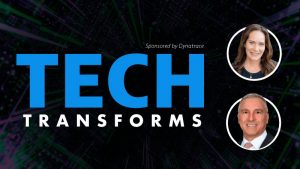As organizations turn to AI, how can they ensure that the data and algorithms that fuel AI are based on trusted, unbiased, and responsible AI?
Artificial intelligence is rapidly transforming the world around us, with applications based on AI emerging in virtually every industry and sector.
This trend has accelerated with the recent democratization of access to generative AI-driven solutions. However, as AI systems become more complex and sophisticated, organizations are learning that they need to ensure the AI they use is responsible and trustworthy.
Data suggests that organizations are quite concerned about the role of AI in making responsible, well-informed decisions. Indeed, according to the recent Dynatrace report, “The state of AI,” 98% of 1,300 technology leaders are concerned that generative AI could be susceptible to unintentional bias, error, and misinformation.
There is an increased focus on trusted, responsible AI because when the following factors are overlooked, they can cause significant financial, business, and legal repercussions:
- The opacity of algorithms. It can be difficult to understand the basis of AI systems’ decisions, particularly when they are trained on large and complex data sets.
- AI system bias. AI systems and their data can be biased, either intentionally or unintentionally, reflecting the biases of their creators or the data on which they are trained.
- Unauthorized usage of data for AI. Every organization needs to carefully consider how to minimize the risk of AI accessing and using data without authorization—and not just a company’s own data, but also customer and user information.
Responsible AI approach at the core
To support a responsible AI approach, organizations need to consider the integrity of their broader strategy for monitoring IT systems. To this end, they need an approach to IT system monitoring that can promote accurate, unbiased, and timely data inputs.
Organizations need an observability platform that can gather, store, and analyze data in a unified manner and retain proper context. This data context becomes the foundation for training AI algorithms with unbiased, accurate, secure, and timely data.
Moreover, a unified approach to observability enables organizations to ensure a responsible approach to AI by providing transparency into how the algorithms arrive at decisions. This enables organizations to ensure that the data insights are devoid of bias and supported by fact-based inputs.
Dynatrace collects and analyzes large amounts of observability and security data. Then, Dynatrace converts this data into precise answers that customers need to simplify cloud operations and deliver flawless and secure digital experiences using a responsible AI approach.
Transparent and explainable AI. Users get full transparency into how Davis AI derives answers and which techniques it has used. Users are in control of each phase of Davis AI processing to ensure data privacy, eliminate bias, and promote fairness.
Trusted data. Customers have full control over the data that Dynatrace Davis AI uses. They can choose which data to share with Dynatrace that Davis AI can use to generate answers. At any time, they can investigate what system data Davis AI is evaluating. This approach gives users the control they need to ensure the data Davis AI trains on and processes.
Data in context. Davis AI makes sure that data is used in the context set up by Smartscape, a real-time, dynamic dependency map that visualizes all application components, and OneAgent, a single agent that provides a set of specialized services that have been configured specifically for your monitoring environment. All the relevant information collected and the associated real-time topology information is put to use.
Causal AI that’s repeatable. Unlike probabilistic approaches, Davis AI delivers causal, deterministic answers that are repeatable—causal AI can identify precise cause and effect. At Dynatrace, we continually test Davis AI to ensure repeatable and reliable results.
Data privacy and end-to-end security. Dynatrace embeds data privacy principles into the core of the platform. This gives customers the ability to extend protections beyond the minimum legal requirements when it comes to protecting customer data. Independent security certifications (FedRAMP, StateRAMP, ISO2700, and SOC2 Type II) and regular independent penetration testing ensure the data security and privacy controls implemented by Dynatrace meet the stringent compliance requirements.
Choosing responsible AI for hundreds of use cases
Dynatrace enables organizations to use the power of AI responsibly to optimize their IT operations. These capabilities can automate tasks, identify anomalies, and make predictions. Dynatrace AI is easy to use and provides actionable insights that can help organizations improve their IT performance. Some of the most common use cases include the following:
- Anomaly detection. Davis AI uses multidimensional baselining to automatically detect anomalies in the response times and error rates of applications and predictive AI to detect abnormalities in application traffic and service load.
- Root-cause analysis. Davis AI automatically detects customer-facing issues and uses topology, transaction, and code-level information to precisely pinpoint a problem’s root cause. This can help organizations to identify potential problems before they cause outages by proactively remedying them.
- Predictive operations. Davis AI can predict when issues will occur, preempt or resolve these issues, and ensure reliable operations. For example, predictive disk resizing and autoscaling resources. The teams can help organizations to prevent outages and to extend the lifespan of equipment.
Trusted AI from Dynatrace is a powerful solution that provides organizations with the control and transparency they need to use AI safely and ethically for building and running resilient software securely.



Looking for answers?
Start a new discussion or ask for help in our Q&A forum.
Go to forum